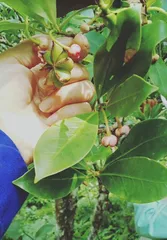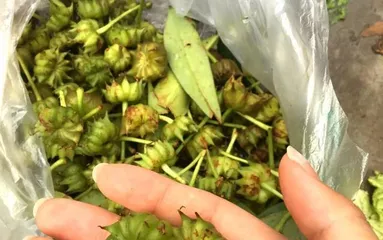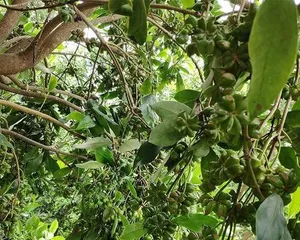Abstract:
Star Anise Maturity Season and Cultivation Methods Star anise is a common condiment loved for its unique taste and aroma. However, to harvest delicious star anise, one must not only pay attention to cultivation during planting but also master the maturity season and proper harvesting...
Star Anise Maturity Season and Cultivation Methods

Star anise is a common condiment loved for its unique taste and aroma. However, to harvest delicious star anise, one must not only pay attention to cultivation during planting but also master the maturity season and proper harvesting methods. This article will detail the maturity season and cultivation methods of star anise.
I. What is Star Anise
Star anise, also known as big fennel or star fennel, is a common condiment grown in southern China and Southeast Asia. It gets its name from its eight-pointed shape and has a rich aroma and flavor.

II. Growth Habits of Star Anise
Star anise prefers warm and humid climates, with optimal growing temperatures between 20°C and 25°C. It requires long sunshine hours and loose, fertile soil. Additionally, star anise needs good air circulation, so it grows best in well-ventilated environments with appropriate humidity.
III. Growth Cycle of Star Anise
The growth cycle of star anise is generally 2-3 years, with the first year being the growth period, the second year the development period, and the third year the maturity period.
IV. Maturity Season of Star Anise
Star anise typically matures between September and October, when it begins to change color and enter the maturity stage.

V. Harvesting Methods for Star Anise
When harvesting star anise, note the following points: First, select star anise that has changed color and whose base has detached for picking; Second, after picking, dry promptly and avoid direct sun exposure and rain; Finally, dry the fully dried star anise to semi-dry state, then roast it.
VI. Storage Methods for Star Anise
After harvesting, star anise should be dried and roasted promptly, then stored in a ventilated and dry place, avoiding direct sunlight and moisture.
VII. Cultivation Methods for Star Anise
- Soil management: Maintain soil moisture, keep it loose, and apply appropriate organic fertilizer.
- Pest and disease control: Timely removal of weeds, pests, and pathogens to maintain healthy growth of star anise.
- Pruning management: Regular pruning and shaping of star anise plants to maintain orderly growth.
VIII. Efficacy and Uses of Star Anise
Star anise has effects such as warming the middle energizer, dispelling wind and dampness, and regulating qi to relieve pain. It is commonly used in cooking seasonings or traditional medicine formulas.
IX. Nutritional Components of Star Anise
Star anise contains volatile oils, terpenes, alkaloids and other components, possessing high nutritional value.
X. Consumption Methods of Star Anise
Star anise can be used as a cooking seasoning or combined with other medicinal herbs in traditional medicine. In cooking, appropriate amounts of star anise can enhance the flavor and aroma of dishes.
XI. Adverse Reactions to Star Anise
Excessive consumption of star anise may cause poisoning symptoms including dizziness, vomiting, diarrhea and other discomforts.
XII. Purchasing Methods for Star Anise
When purchasing star anise, choose products with uniform appearance, complete shape, and no pest damage. Check packaging dates and shelf life information.
XIII. How to Identify Quality Star Anise
To identify quality star anise, examine its appearance, smell, and taste. Authentic star anise has an extremely rich aroma and unique taste.
XIV. Development Prospects of Star Anise
Star anise is one of the important condiments in southern China and Southeast Asia. With people's pursuit of food health, its market prospects will become increasingly broad.
Conclusion: Through this introduction, readers should have a deeper understanding of mastering the maturity season and cultivation methods of star anise. During planting, attention should be paid to the suitable growing environment and correct harvesting and storage methods to achieve better yields. At the same time, star anise not only has delicious taste and aroma but also various efficacies and nutritional components, making it a very valuable condiment worth promoting and developing.
<|end_of_box|>```